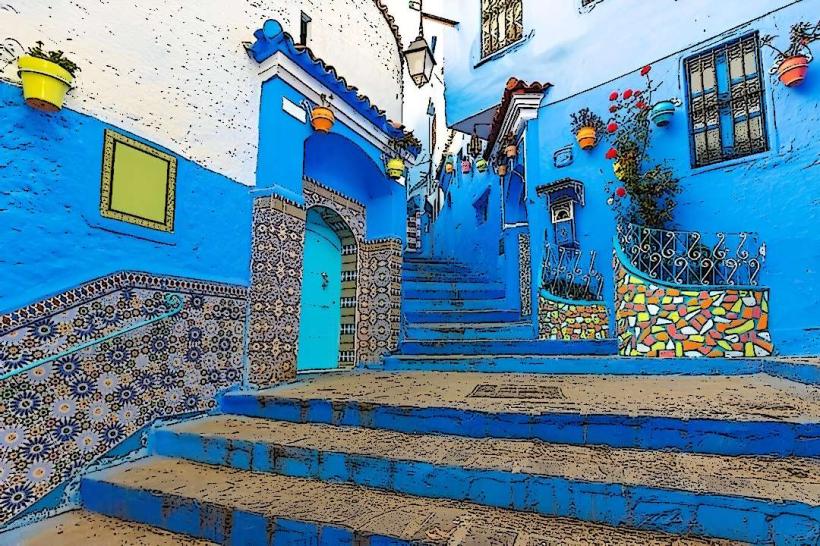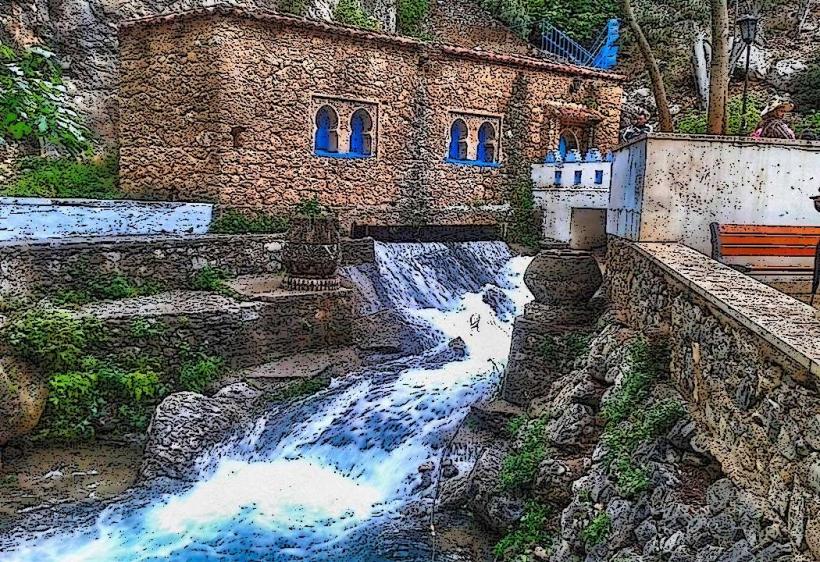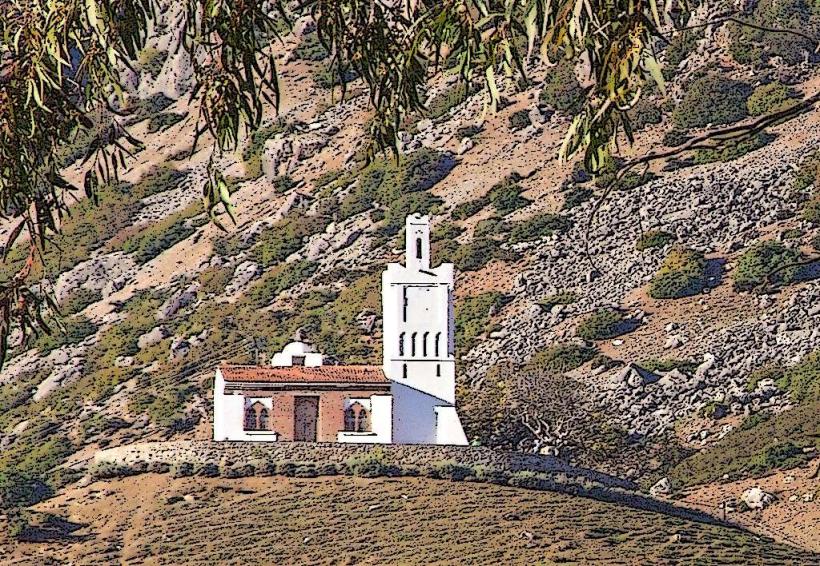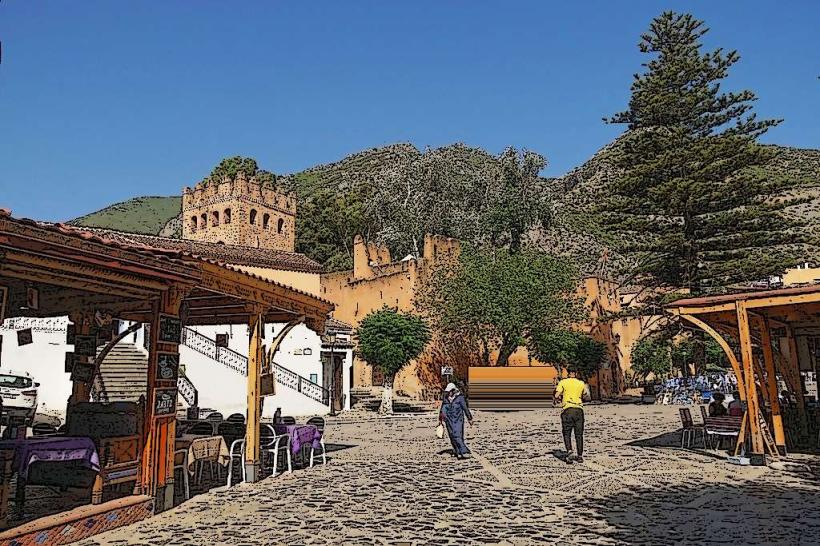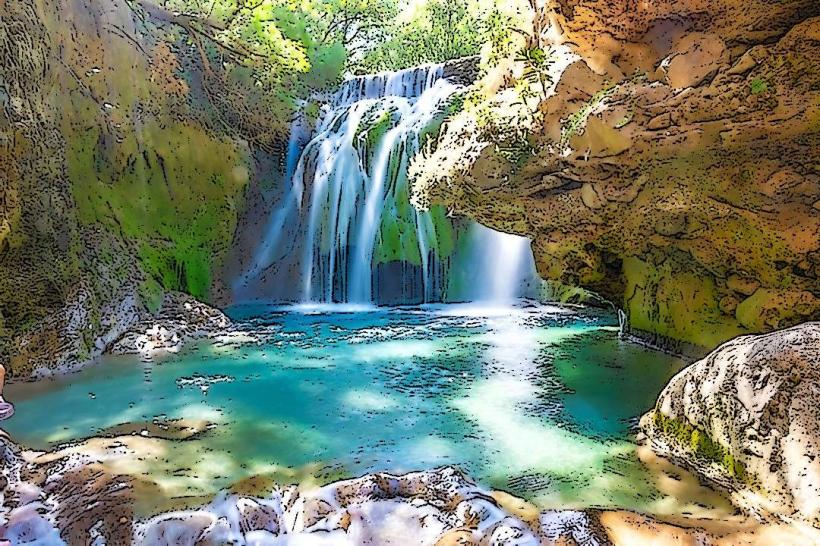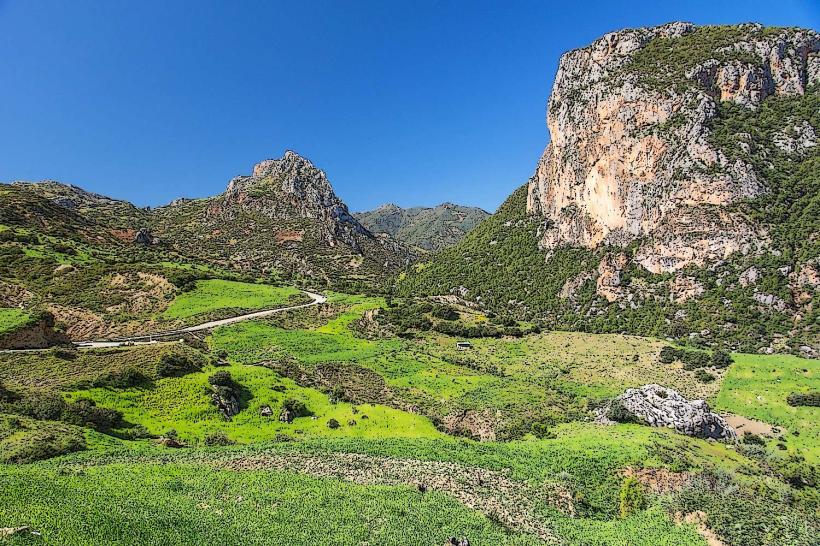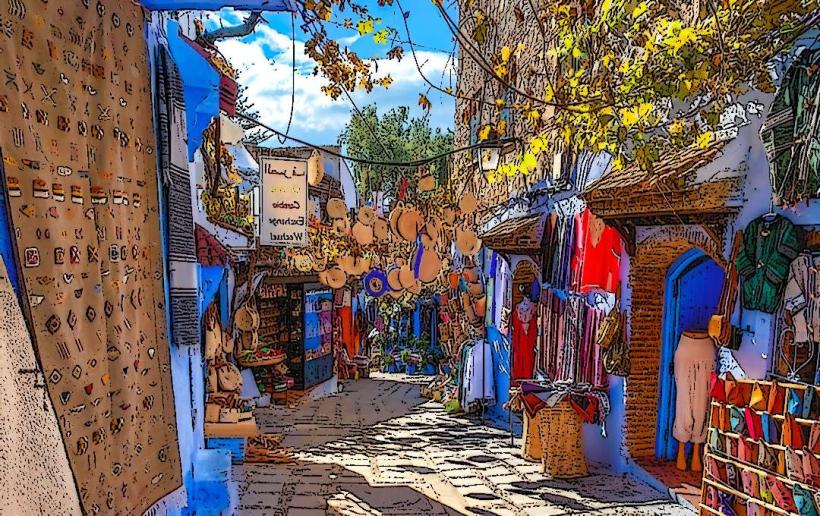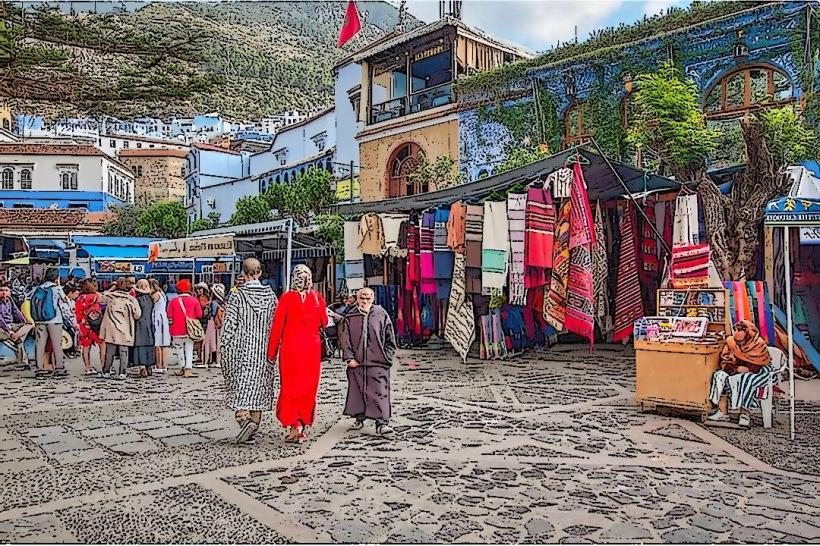Information
Landmark: Grand Mosque of ChefchaouenCity: Chefchaouen
Country: Morocco
Continent: Africa
Grand Mosque of Chefchaouen, Chefchaouen, Morocco, Africa
Overview
Locals call it Jamaâ El Kebir, and the Grand Mosque of Chefchaouen stands as one of the city’s most treasured religious and historic landmarks, its whitewashed walls catching the afternoon sun, equally important in the heart of the timeworn medina, right on Plaza Uta el-Hammam, the mosque stands as both a site where people gather to pray and a proud marker of the city’s Andalusian and Islamic heritage.Here’s a closer peek at the mosque and why it matters: The Grand Mosque rose in the 15th century, about the same time Chefchaouen was founded in 1471 by Moulay Ali Ben Moussa Ben Rachid El Alami, a descendant of the Prophet Muhammad, its pale stone walls catching the first light of dawn, therefore he built the city as a fortress to guard against Portuguese attacks, its stone walls bristling with watchtowers.After Spain’s Reconquista, Muslim and Jewish families from Andalusia streamed south into North Africa, settling in towns like Chefchaouen with its blue-washed walls.mediumFor centuries, the mosque has stood at the heart of the city, a site where neighbors gather for prayer and share news under its cool stone arches, simultaneously the Grand Mosque’s architecture draws attention for many reasons, especially its unusual location and striking octagonal minaret-a rare sight in Morocco, rising like a stone lantern against the sky.Most mosques here rise with square minarets, but this one shows off Andalusian and North African influences-arches and patterns that came long before the uniform lines of Almohad design, equally important earth-toned walls help the mosque disappear into the medina, where pale blue plaster meets sun-baked stone.Built from local stone and plaster, it carries simple yet graceful details-like the smooth curve of a doorway cut by hand, likewise interior: Non-Muslims can’t enter, a rule shared by many traditional Moroccan mosques where quiet courtyards and shadowed prayer halls remain private.Still, the outside, with its tall minaret and wide stone plaza, is open to everyone-and it’s a favorite spot for both visitors and people who live here, therefore the mosque features a broad courtyard, or sahn, with sunlight spilling across its stone floor, and a cool fountain where worshippers wash before prayer.The mosque is the heart of worship for the local Muslim community, where people gather for daily prayers, listen to Friday sermons, and celebrate special occasions like Eid, with the warm scent of incense drifting through its halls, as a result spiritual Heritage: The mosque stands at the heart of Chefchaouen’s rich Sufi roots and long-held religious traditions, where the air often carries the soft murmur of evening prayers.For generations, the town’s been a hub of Islamic learning and spiritual life, its narrow streets dotted with quiet zawiyas where scholars shape its deeply religious soul, as well as community Life: Much like other heritage mosques in Morocco, it doubles as a lively gathering site, especially in the heart of the medina where voices echo in the narrow streets.The mosque looks out over Plaza Uta el-Hammam, a lively central square edged with cafés, restaurants, and terraces tucked beneath leafy shade, alternatively the Kasbah sits across from the mosque, a 15th-century fortress with quiet gardens and a petite ethnographic museum tucked inside.Curiously, Locals and travelers alike love the plaza, especially at sunset, when golden light spills over the Rif Mountains and bathes the buildings in a warm glow, besides visitor Notes Access: Non-Muslims can’t step inside the mosque, but its graceful domes and towering minarets are worth pausing to admire from the street.You’re welcome to take photos of the exterior, as long as you do so respectfully-no leaning against the timeworn stone walls, furthermore stay alert and respectful when it’s time to pray, even if all you hear is the soft rustle of robes.The best time to visit is early morning or late afternoon, when the plaza feels calm and the soft light brings out the warm stone and intricate arches, as a result the space around the mosque feels peaceful, with soft footsteps echoing across the stone walkway.The call to prayer often drifts across the valley, bouncing off the mountain walls and filling the medina with a warm, spiritual hush, therefore the Grand Mosque of Chefchaouen isn’t just a site of worship; it rises like a quiet stone witness to the city’s birth, its Andalusian heritage, and the faith that still shapes life here.You might not step inside, but standing at its edge, hearing vendors call out and watching the medina’s bustle gives you a vivid, genuine sense of Chefchaouen’s soul.
Author: Tourist Landmarks
Date: 2025-09-26

